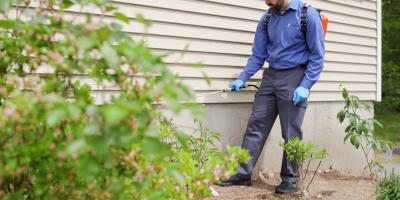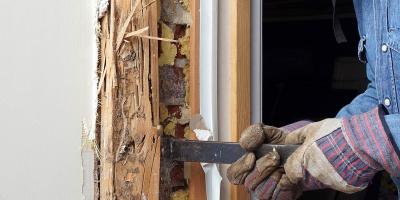The Foreign Invaders That Feel Right At Home Inside Of Yours
Ladybugs are good luck, right? When your home is infested by a loveliness of ladybugs this fall, (we’re not biased here, that’s seriously what a group is called) it can start to feel like all of your luck has run out. Though these insects are notably more beneficial than they are harmful, most New Englanders would prefer to keep them in the garden where they actually belong.
Interestingly enough, the ladybugs that are native to the United States feel so at home in the garden that they don’t seek shelter indoors during the winter. Strikingly similar ladybugs, native to continental Asia, aren’t nearly as comfortable hibernating under leaves in the garden. For homeowners with any type of garden adorning their land, the plight against ladybugs is cause for a lot of ambivalence as to whether or not their plants need them as much as they would like to see them gone.
Beneficial “Bugs” Outside, Benign Inside
Ladybugs are the help around the garden that you never knew you had. When it comes to insects, these little red and black ones often go uncrushed due to the fact that they protect our farms and gardens from other bugs. In fact, a great way to remember this is to consider the fact that ladybugs, though their name may suggest otherwise, aren’t “bugs” at all.
In entomology, a true bug is one that has a proboscis (or mouth) that is specialized to suck fluids, generally restricting their diets to plants. Insects like ladybugs, which are actually members of the beetle family, are chewing insects that feed on bugs. Luckily for gardeners throughout New England, the bugs they feed on are the same bugs that are feeding on their hard work. Ladybugs particularly love to eat aphids, the tiny green bugs that ravage plants and destroy harvests, making them one of the best forms of natural pest control.
If you’ve been working hard in the garden all summer and fall, you probably plan to spend the winter inside relaxing and resting up for the next outdoor season. This runs parallel to what ladybugs do once they get in your home: a whole lot of nothing. They feed on other bugs, meaning that the wood and other materials used in your home’s structure aren’t in jeopardy. They aren’t known to carry any diseases, which would be difficult for them to spread anyway as they rarely bite humans.
Although they tend to secrete a pungent yellowish fluid when disturbed, the only real issue with ladybugs invading homes is that they do so in very large numbers. When guests say “you have a lovely home”, you don’t want them to be referring to the loveliness of ladybugs infesting your windows and other areas where cracks and crevices are prominent.
The Multicolored Asian Lady Beetle
If you have an infestation of ladybugs in your home, it is without question this particular species. The Multicolored Asian Lady Beetle is a foreign species that was introduced into the United States as a form of natural pest control, and is most likely the type of ladybug that protects your garden from destruction. They are beneficial throughout the summer months in New England, but they’d sure like to come inside during the winter.
Have you only noticed a few ladybugs in your home? Try and identify them with this handy field guide from the Lost Ladybug Project, an organization dedicated to finding and preserving native ladybug species. If it turns out that the ones in your home are of the Asian variety, it is very likely that there are many more in your home than you realize.
Keeping Ladybugs In The Garden
The ladybugs that overwinter indoors are starting to move in as fall approaches, and it’s time to act now to prevent it from happening. The JP Pest Services Fall Invaders Program consists of two pest-fighting treatments that are performed typically during this time. This program targets the cracks and crevices of your home where these invading pests can gain entry. Stopping these pests at their points of entry is vital because once they’re inside, they’re more difficult to eliminate.
Due the seasonal nature of fall invading pests, this program is most effective when implemented before fall begins. Waiting until after fall starts or after you notice invaders may make your pest-control program less effective. Contact us today to keep these spotted pests out!



